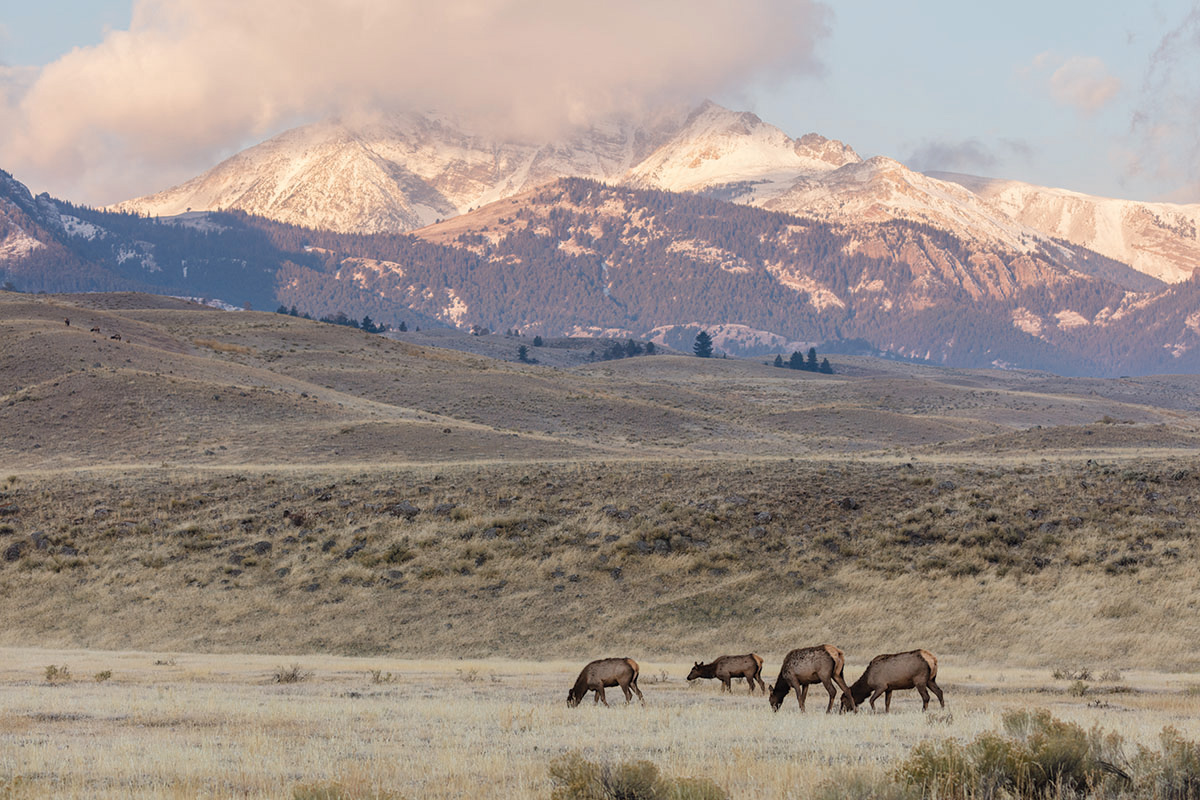This piece was originally published in The Hill.
Conservation issues rarely inspire bipartisan consensus in Washington, but the need to maintain wildlife migration corridors is proving to be an exception. A series of orders from the secretary of the Interior and the Wildlife Corridors Conservation Act, introduced last month in both the House and the Senate, all seek to give migratory species the freedom to roam to find food, cover and places to raise their young.
But any effort to protect wildlife corridors will necessarily require support from a key group: private landowners. That’s because whether it’s elk, deer or grizzly bears, the survival of many species depends on the actions of landowners. Good policies derive from good process, and for this landscape-scale approach to conservation to succeed, it will require not only refocusing the management of some public lands but also enlisting the early input and active involvement of America’s private landowners who provide essential habitat.
Former Interior Secretary Ryan Zinke ordered agencies to work with states to conserve migratory corridors for species such as elk, deer and pronghorn on federal lands in the West. His successor, David Bernhardt, expanded the order to include pursuing cooperative relationships with private landowners whose property provides important wildlife habitat.
The bipartisan Wildlife Corridors Conservation Act would take the orders a step further and establish a nationwide Wildlife Corridors Conservation System built, in part, on the voluntary cooperation of farmers, ranchers and woodlot owners who have key areas of wildlife habitat on their property.
With more than 60 percent of the United States in private ownership, conserving migratory corridors will require more than landowners voluntarily cooperating with policies originating inside the beltway. It will depend on landowners being deeply involved at the front end of developing these policies so that as they evolve and advance wildlife are made an economic asset instead of a liability.
Consider the Greater Yellowstone Ecosystem, home to several species that migrate long distances between summer habitat on public lands and critical winter habitat on private lands. According to University of California, Berkeley, researcher Arthur Middleton, migratory elk in the Yellowstone region rely on private lands for as much as 80 percent of their winter range. These are the same elk that Yellowstone’s wolves and grizzlies depend on for food, making the continued recovery of these prized species largely dependent upon the actions of private landowners far beyond the park’s boundary.
But big-game species like elk often impose costs and risks on landowners, especially those who manage their property for agriculture. In Montana, big-game cause damage to forage crops in excess of $31 million each year. The presence of elk also increases the risk they would transmit the disease brucellosis to cattle, an event that could devastate a rancher’s livelihood. This reality means that landowners are left to shoulder much of the burden of living with elk, creating an environment where support for conserving this migratory species may not be guaranteed.
Federal policies seeking to conserve wildlife corridors must address this reality more than they currently do. The best way to achieve this is with a process that involves landowners early and often. It should also include those who play a supportive role such as impact investors, insurance companies, and conservation organizations with a track record of private land partnerships. Such a process will provide policymakers with insights into what landowners need to successfully co-exist with wildlife, what tools are available in the private sector to help achieve that goal in a way that does not stretch agency budgets or add to public deficits, and what regulatory and other obstacles may need to be removed or mitigated to allow those tools to be fully utilized.
By taking this policymaking approach we can ensure that landowners are included rather than alienated by the government’s effort to conserve wildlife migration corridors and, in turn, help guarantee that those corridors are healthy, functional, and more than just lines on a map.




